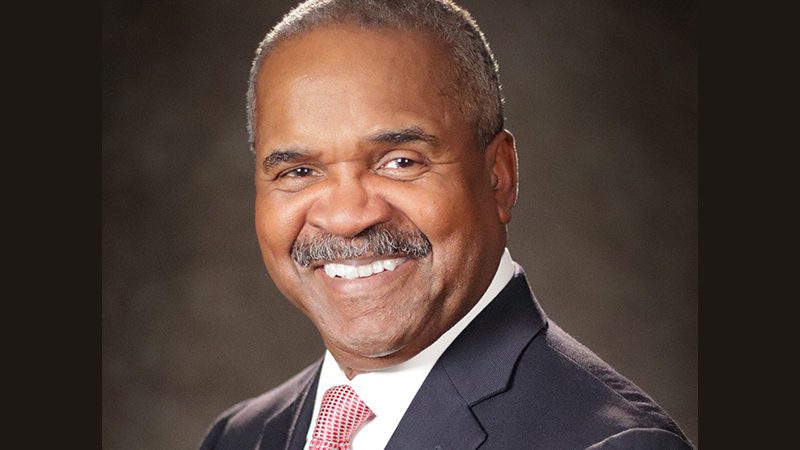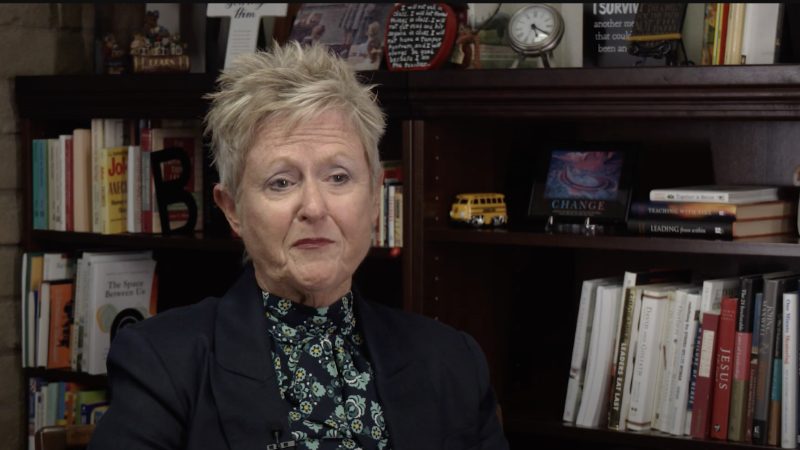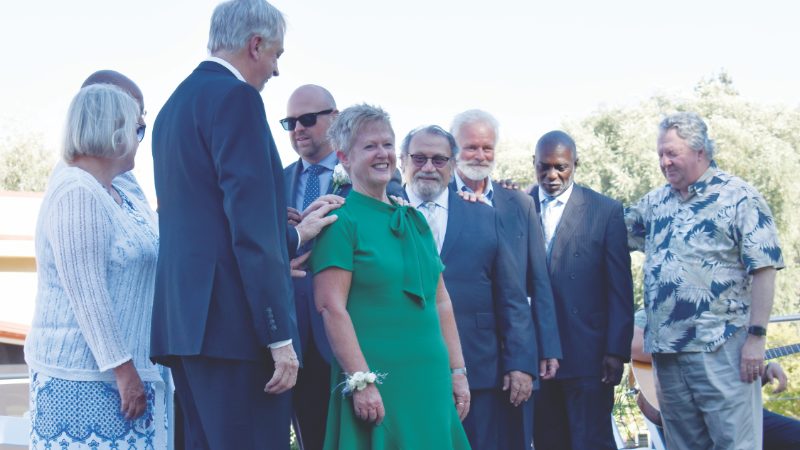October 22, this year and every year, is a teachable moment for those who have lived in hope for something that hasn’t yet happened.
This is the 180th anniversary of what Adventists and the progeny of the religious Millerite movement euphemistically call “The Great Disappointment.” Talk about an understatement. It was closer to being “The Great Annihilation of Hope” or “The Great Theological Mistake Big Enough to End the Whole Discussion” or “The Great Challenge That if It Doesn’t Break You Will Make You Stronger.”
Turns out it wasn’t the first time that Christians had been majorly disappointed. As great as the disappointment might have been for those in the middle of it in 1844, it was nothing compared to the twin fundamental challenges faced by first-century Christians.
For them, the first extraordinary disappointment was the execution of Jesus Christ by those in power. Their beloved leader was killed. Dead. Pretty hard to come back from that. (Cue the resurrection.)
The second disappointment—the same one faced by the early Adventists—was that after the miracle of His resurrection and His ascent into heaven, He didn’t come back like He said He would. Even though He had promised. And even though people—and this is important—were doing everything they could to cause Him to come back, it didn’t change anything.
For some, this disappointing set of circumstances meant cutting their losses, bailing out, and never looking back. But for the ones persuaded that Jesus was someone unlike anyone they had ever encountered before, that wasn’t an option. So, they tried to make some sense of it.
The various apostles and writers of the New Testament dealt with it in different ways.
For Mark, whose Gospel was written nearest to the death of Christ, it was an opportunity to understand the dynamic of the messianic secret ("Who do men say that I am?" [Mark 8:27, RSV]), and to embrace the mystery of this extraordinary and unprecedented occurrence: God with us. I think we can see this is exemplified in Christ’s relationship with Martha.
For Matthew it was living lives that were so enthused with Christ that the disciples became Christ to the world and had the same impact on those whose lives they touched as Christ had had on theirs. ("Therefore go and make disciples" [Matthew 28:19, NIV].) This is exemplified, perhaps, in Christ’s relationship with the woman at the well.
For Luke it was the search for meaning in history and the continued search for the ultimate redemption of humankind. (“But we had hoped that he was the one to redeem Israel" [Luke 24:21, RSV].) This is exemplified in part by Christ’s relationship with Mary, his own mother.
For Paul, who was not one of the twelve, it was the paradox of the gospel. (Jesus' death was a part of God's mysterious plan; the weakest moment is actually the strongest; through His death, not His life, He has saved the world.) This is demonstrated in the relationship Jesus had with Mary Magdalene.
For Peter, it was coming to a profound understanding of God’s true purpose. (“The Lord is not slow in keeping his promise, as some understand slowness. Instead he is patient with you, not wanting anyone to perish, but everyone to come to repentance” [2 Peter 3:9, NIV].) His take is my favorite, and it is demonstrated by what the New Testament calls the bride of Christ, for whom Peter had special responsibility.
And finally, for John, the dissonance and disappointment are resolved in the personal search for meaning in the knowledge of Jesus Himself. (“Behold, the Lamb of God, who takes away the sin of the world" [John 1:29, RSV].) This is the framework through which those who believe in Jesus were to present His claims of Lordship, and His gracious love, to the world in which they would be living.
With this cloud of witnesses, what was known as the Great Disappointment can also be understood as a transformational spiritual moment in the lives of those who have had to confront disappointment. As we all have—disappointment in our church, disappointment in each other, disappointment in ourselves.
Mark and Martha call us to embrace the unknown circumstances of our journeys to be disciples. Matthew and the woman at the well call us to exemplify in our own lives the gracious character of Christ Himself. Luke and the Madonna ask us to look beyond the present moment to the horizon of our hopes, treasuring in our hearts that which is unattained but not unknown.
Paul and Mary Magdalene call us to treasure the mystery of salvation in our hearts and the upside-downness of a world where the weakest are actually the strongest and the shadow of death is vanquished not by the sword but by the unquenchable, passionate light of love, howbeit small. Peter calls us to be the church of Christ’s imagination—the bride who waits with patience and fidelity.
And John, the beloved, reminds us that our life in Christ announces His saving grace to the whole world—even those who are experiencing disappointment and disillusionment.
So, while October 22 is not a celebration, it’s not exactly a disappointment either. Call it a milestone. The journey continues.
_____________________________
Ray Tetz is the director of communication and community engagement of the Pacific Union and the publisher of the Recorder. Versions of this essay have appeared previously in church publications.
La última palabra: El evangelio del chasco
Por Ray Tetz
El 22 de octubre, este año y todos los años, es un momento de enseñanza para aquellos que han vivido con la esperanza de algo que aún no ha sucedido.
Este es el 180 aniversario de lo que los adventistas y la progenie del movimiento religioso millerita llaman eufemísticamente «El Gran Chasco». Tremendo eufemismo ese. Estuvo muy a punto de ser llamado «La gran aniquilación de la esperanza» o «El gran error teológico lo suficientemente grande como para poner fin a toda discusión» o «El gran desafío de que si no te hace daño te hará más fuerte».
Resulta que no fue la primera vez que los cristianos se sintieron muy chasqueados. Por grande que pudiera haber sido el chasco para los que lo pasaron en 1844, no fue nada comparado con los dos desafíos fundamentales que enfrentaron los cristianos del primer siglo.
Para ellos, el primer extraordinario chasco fue la ejecución de Jesucristo por parte de los que estaban en el poder. Su amado líder fue asesinado. Muerto. Es bastante difícil recuperarse de eso. (Entra en escena la resurrección.)
El segundo chasco, el mismo que enfrentaron los primeros adventistas, fue que después del milagro de su resurrección y su ascenso al cielo, no regresó como dijo que lo haría. A pesar de que lo había prometido. Y aunque las personas —y esto es importante— estaban haciendo todo lo posible para que regresara, eso no cambió nada.
Para algunos ese decepcionante conjunto de circunstancias significó aceptar la situación, olvidarse del asunto y a rey muerto rey puesto. Pero para los que estaban persuadidos de que Jesús era alguien diferente a cualquiera que hubieran conocido antes, esa no era una opción. Así que trataron de encontrarle algún sentido.
Los diversos apóstoles y escritores del Nuevo Testamento lo trataron de diferentes maneras.
Para Marcos, cuyo evangelio fue escrito más cerca de la muerte de Cristo, fue una oportunidad para comprender la dinámica del secreto mesiánico («¿Quién dicen los hombres que soy yo?» [Marcos 8,27]), y abrazar el misterio de ese acontecimiento extraordinario e inédito: Dios con nosotros. Creo que podemos ver que eso se ejemplifica en la relación de Cristo con Marta.
Para Mateo, se trataba de vivir vidas que estaban tan imbuidas en Cristo que los discípulos se convirtieron en Cristo para el mundo y tuvieron el mismo impacto en aquellos cuyas vidas tocaron que Cristo había tenido en las suyas. («Vayan, pues, y hagan discípulos» [Mateo 28:19]. Eso se ejemplifica, tal vez, en la relación de Cristo con la mujer en el pozo.
Para Lucas era la búsqueda del sentido de la historia y la búsqueda continua de la redención definitiva de la humanidad. («Pero esperábamos que él era el que iba a redimir a Israel» [Lucas 24:21].) Eso se ejemplifica en parte por la relación de Cristo con María, su propia madre.
Para Pablo, que no era uno de los doce, era la paradoja del evangelio. (La muerte de Jesús fue parte del misterioso plan de Dios; el momento más débil es en realidad el más fuerte; a través de su muerte, no de su vida, él ha salvado al mundo). Eso se demuestra en la relación que Jesús tuvo con María Magdalena.
Para Pedro, era llegar a una comprensión profunda del verdadero propósito de Dios. («El Señor no tarda en cumplir su promesa, como algunos entienden la lentitud. Al contrario, él es paciente con nosotros, no queriendo que nadie perezca, sino que todos se arrepientan» [2 Pedro 3:9]). Su opinión es mi favorita, y demuestra lo que el Nuevo Testamento llama la novia de Cristo, por la cual Pedro tenía una responsabilidad especial.
Y finalmente, para Juan, la disonancia y el chasco se resuelven en la búsqueda personal de sentido en el conocimiento de Jesús mismo. («He aquí el Cordero de Dios, que quita el pecado del mundo» [Juan 1:29]). Ese es el marco a través del cual aquellos que creen en Jesús debían presentar sus demandas de Señorío, y su amor misericordioso, al mundo en el que vivirían.
Con esa nube de testigos, lo que se conoció como el Gran Chasco también puede entenderse como un momento espiritual transformador en la vida de aquellos que han tenido que enfrentar una decepción. Como todos lo hemos hecho: decepción en nuestra iglesia, decepción en los demás, decepción en nosotros mismos.
Marcos y Marta nos llaman a abrazar las circunstancias desconocidas de nuestros viajes para ser discípulos. Mateo y la mujer del pozo nos llaman a ejemplificar en nuestras vidas el carácter misericordioso de Cristo. Lucas y la Virgen nos piden que miremos más allá del momento presente, hacia el horizonte de nuestra esperanza, atesorando en nuestro corazón lo que no se ha alcanzado, pero no se desconoce.
Pablo y María Magdalena nos llaman a atesorar en nuestro corazón el misterio de la salvación y la periferia de un mundo en el que los más débiles son en realidad los más fuertes y la sombra de la muerte no es vencida por la espada, sino por la luz inextinguible y apasionada del amor, por pequeño que sea. Pedro nos llama a ser la iglesia de la imaginación de Cristo, la novia que espera con paciencia y fidelidad.
Y Juan, el amado, nos recuerda que nuestra vida en Cristo anuncia su gracia salvadora a todo el mundo, incluso a aquellos que están experimentando decepción y desilusión.
Entonces, si bien el 22 de octubre no es una celebración, tampoco es exactamente un chasco, una decepción. Llámalo un hito. El viaje continúa.
_____________________________
Ray Tetz es el director de comunicación y participación comunitaria de la Pacific Union Conference y director de el Recorder. Versiones de este ensayo han aparecido previamente en publicaciones de la iglesia.






